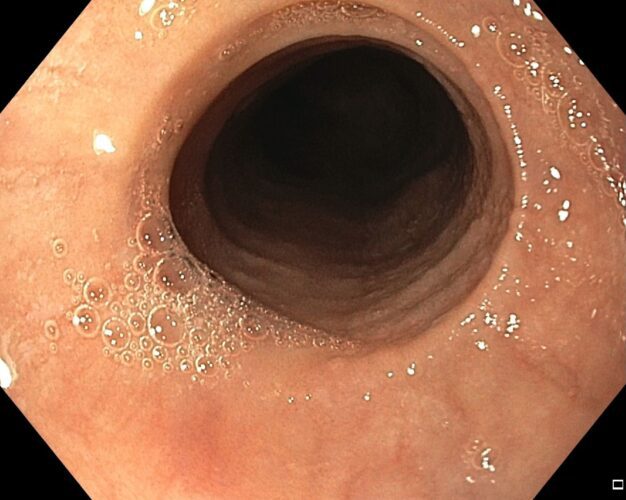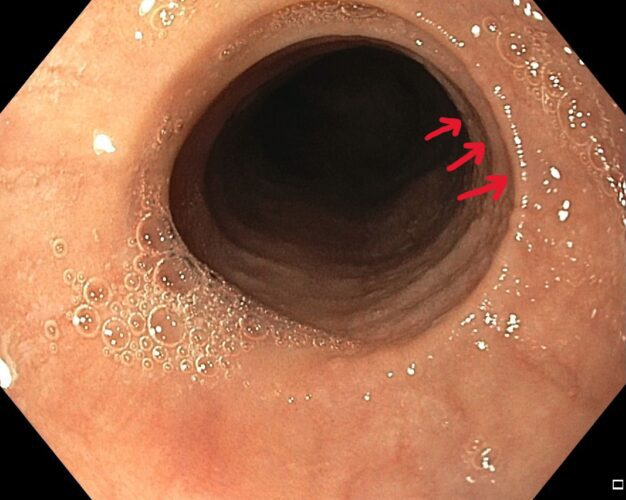Case 10: A 64-Year-Old Man with Dysphagia
This 64-year-old man presents with a two year history of progressive dysphagia to solids. He reports a childhood history of asthma, as well as a recent episode of food impaction after eating spaghetti. He denies any history of acid reflux, and does not take any medications. During his upper endoscopy, the following abnormality is noted in the middle to upper esophagus. What is the name of this endoscopic finding, and what are the underlying causes?


This patient has stacked upper esophageal rings (red). Esophageal rings typically cause no symptoms, however patients can occasionally present with dysphagia to solids, or rarely with food impaction. Esophageal rings are almost always associated with a hiatal hernia, however they can also occur in patients with eosinophilic esophagitis. The pathophysiology is presumed to be secondary to chronic inflammation causing irritation.


Source: Ghazaleh S, Patel K. Esophageal Webs And Rings. [Updated 2022 Jan 24]. In: StatPearls [Internet]. Treasure Island (FL): StatPearls Publishing; 2022 Jan-. Available from: https://www.ncbi.nlm.nih.gov/books/NBK539771/
The biopsy results from this patient returned one week later and revealed the following. How can the underlying cause be discerned?
This patient has eosinophilic esophagitis. There are several findings in this case to support this diagnosis:
- Clinical history: The patient reported a history of food impaction and childhood asthma, both of which are associated with eosinophilic esophagitis
- Endoscopic findings: The endoscopic finding of stacked upper esophageal rings is seen in roughly half of patients with eosinophilic esophagitis
- Histology: A peak eosinophil count greater than 15 per high power field is suggestive of a diagnosis of eosinophilic esophagitis, in the absence of secondary causes (GERD, achalasia, pill esophagitis, etc.)
- Bloodwork: A review of the patients bloodwork revealed peripheral eosinophilia, ranging from 0.3-0.8 over the previous decade. Mild eosinophilia is also seen in approximately half of patients with eosinophilic esophagitis.

